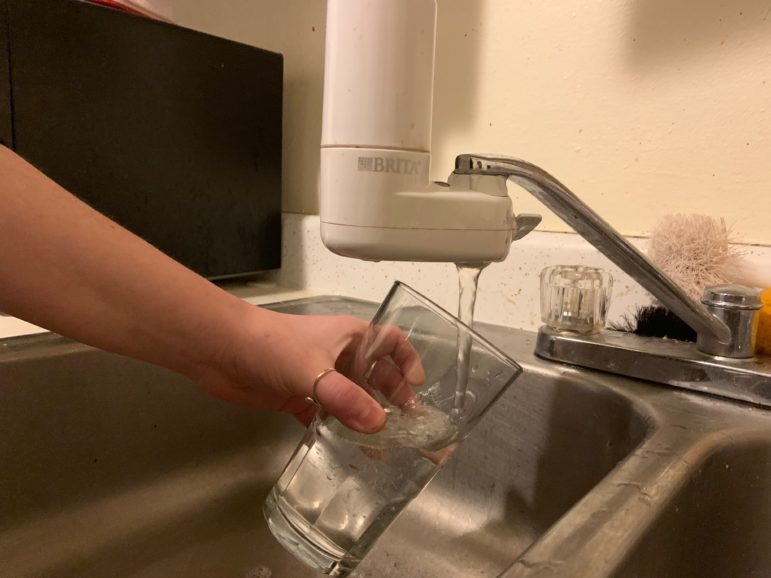
Resident Kara Taylor uses a certified lead-free filter, which was tested by an independent third party. Like many others in East Lansing, Taylor has opted to consume drinking water only from her Brita filter. Image: Kayla Effner
By Kayla Effner
East Lansing, Michigan, is gathering information about lead contamination in resident water services. Notices regarding the potential threat were issued in November.
The notices were triggered by the Michigan Department of Environmental Quality changing its definition of lead service lines.
Previously, internal piping had to either be lead-based or contain lead to be considered a threat. Earlier this year, the rules were changed to include all components of the service line.
“With this change came notification requirements. Within so many days of discovering, we had to inform the public,” said Infrastructure Administrator Ron Lacasse.
Currently, many East Lansing homes have a 12-to 18-inch lead-based gooseneck pipe which connects to the main galvanized steel water service line to the street.
“As long as you have adequate treatment process in place, it’s not a problem,” Lacasse assured.
Ingham County Health communications specialist Amanda Darche echoed these sentiments, using the example of the Flint water crisis. In that case, contamination occurred in large part due to improper treatment which led to water corroding the pipes.
“The methods the City of East Lansing shared to reduce lead exposure are proven and consistent with information available from and vetted by the EPA and CDC,” Darche confirmed.
The notice states there is no “known health or safety concern,” and introduces the city’s 20-year plan to replace all lead water services.
“I do feel fairly safe, as I know they would legally have to tell us if it was not safe for drinking, bathing or cooking,” said resident Kara Taylor.
According to Lacasse, the city is still assessing how many homes fall under this category. Funding for replacements, for which costs range from $4,000 to upwards of $8,000 each, are also being gathered.
Tests were performed on samples from homes both before and after replacement, and Lacasse says none tested above the federal action level of 15 parts of lead per billion.
From a combination of resident reports and crews gathering information, 160 homes have been reported so far. Among those, 17 have had pipes replaced.
The city plans to perform a section of replacements each year and prioritize current project areas.
In the meantime, the state provided residents with a list of ways to reduce potential lead exposure. The list included letting water run for a few minutes before use and installing certified lead-free filters to faucets.
“I wish the city would’ve given a better explanation. I’m glad we received a letter, but with the controversy that is Flint, it definitely scared me a little bit when I first received the mail,” Taylor said.